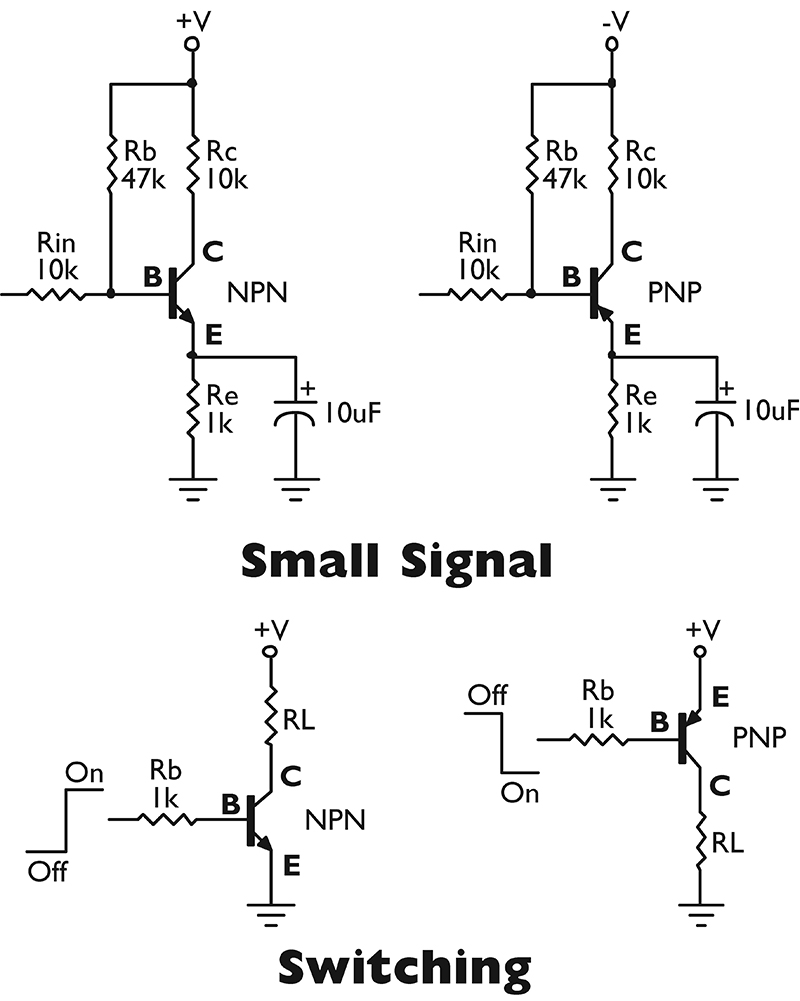With TJ Byers
Semiconductor Sex Explained
Question:
Can an NPN transistor be wired as a PNP transistor? Is it a matter of reversing connections?
Leonard Mary Thomas
Answer:
NPN and PNP transistors are interchangeable if you remember one simple rule: A bipolar transistor is essentially two back-to-back diodes with the base being the common connection. For a transistor to work, one diode is forward biased and the other is reverse biased. Let’s take the common-emitter amplifier as shown below, for example. On the left is an NPN (negative-positive-negative) transistor and on the right is a PNP (positive-negative-positive) transistor. Notice that both circuits are identical — except for one thing. The polarity of the power supply is reversed.

In the NPN configuration, the emitter (the lead that looks like the arrow of a diode, labeled (E) goes to negative (ground). The base (B) goes to +V via the Rb resistor. This forward-biases the base-emitter diode, which exhibits the characteristic 0.7 volts voltage drop. The collector (C), on the other hand, goes to +V — in effect, reverse biasing that diode.
The breakover voltage of this diode is the VCE parameter listed on the spec sheet, and varies from one transistor type to another. The current through the collector-emitter path is controlled by the current flowing through the base-emitter junction. The amount of influence is called the gain of the transistor, or hFE.
Substituting a PNP in the circuit reverses the current flow through the base-emitter diode and the voltage on the collector. Bottom line, most small-signal amplifiers will work equally well if you replace an NPN with a PNP and reverse the power supply polarity. And that means if you have mixed sexes, each and every transistor has to have a sex change. Please note, I said most — not all — amplifiers will work with this exchange. (Electron and hole mobility are not equal, especially at higher frequencies.)
If your application is for logic switching, all you need to do is exchange the emitter and collector in your design so that the forward/reverse bias rule is maintained, as shown in the two bottom circuits. The catch is, when you change sexes, you also change logic. In the NPN configuration, a logic HIGH turns on the transistor. In the PNP version, a logic LOW turns on the transistor. Make sure you adjust accordingly.
A history note. When I was a tyke and new to transistors — having cut my teeth on voltage-controlled vacuum tubes — I heard about this back-to-back diode transistor analogy — and tried to build one myself using 1N34A diodes. Guess what? Didn’t work.
The secret to the transistor’s transconductance is the tiny gap between the collector and emitter called the base that controls the current flow through the transistor. A gap so small that it took nearly six years between 1948 and 1953 to perfect the first reliable commercial transistor: the CK722.


Comments